



by OrganicCrops. Posted on 14 May 2023, 10:41 hrs
Passionate about incorporating natural and healthy foods into your diet? Then you're likely familiar with maca—a Peruvian superfood that has been gaining widespread recognition for its potential health benefits. Over the years, it has become a household staple for individuals worldwide, seeking to embrace wellness through the power of nature.
At OrganicCrops, we take immense pride in producing and exporting the finest Peruvian maca products to customers across the globe. Our commitment to preserving the environment and supporting local communities in Peru sets us apart. With a focus on sustainable and ethical practices, we cultivate our maca with great care, ensuring the highest quality every step of the way.
In this comprehensive guide, we delve into the numerous benefits of Peruvian maca, shedding light on OrganicCrops' cultivation methods. Join us on an enlightening journey as we explore the history of maca, its potential health advantages, and the diverse range of maca products available. Get ready to unlock the secrets of this remarkable superfood!
In the enchanting landscapes of Peru's Andes Mountains, a remarkable root vegetable known as maca takes root. Flourishing amidst high altitudes and challenging conditions, maca exemplifies resilience and strength as a crop. Scientifically referred to as Lepidium meyenii, this extraordinary plant has nourished the indigenous communities of Peru for countless generations. Belonging to the illustrious cruciferous family, which boasts other nutritional powerhouses like broccoli, cauliflower, and kale, maca is a true testament to the bounties of nature.
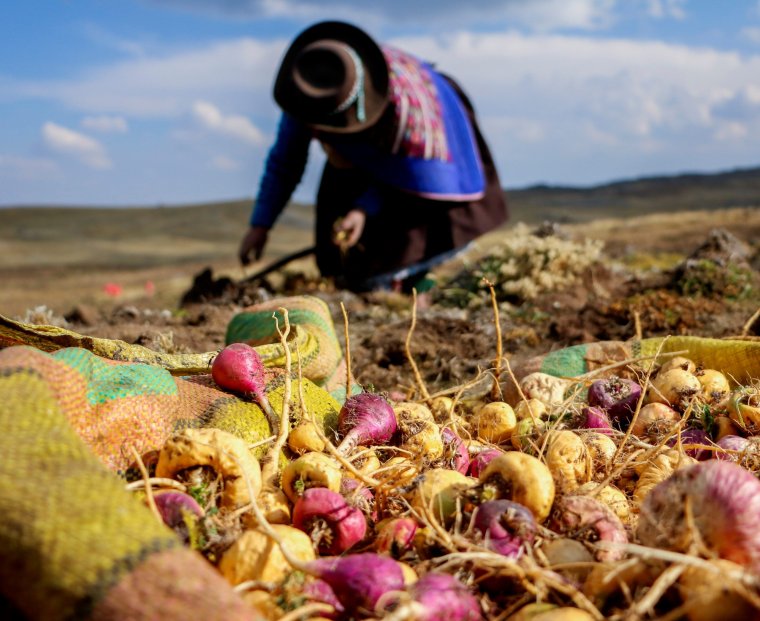
While the exact origins remain shrouded in mystery, it is believed that maca has graced the lands of Peru for over two millennia, cultivated by the indigenous communities who cherished its remarkable properties.
In ancient times, maca held a place of reverence as a staple food for warriors, empowering them with enhanced strength and endurance. Its energizing and revitalizing qualities made it a cherished ally before battles and arduous undertakings. Even Incan royalty recognized its value, employing maca as a natural remedy for various ailments. This invaluable root became a symbol of vitality and prowess, treasured as a precious commodity.
Yet, with the arrival of the Spanish conquest in the 16th century, maca's prominence waned, its memory fading beyond the boundaries of the Andean region. It remained a forgotten gem until recent years, when maca experienced a triumphant resurgence as a celebrated superfood. Today, it enjoys global recognition, captivating the palates and wellness seekers worldwide, as its rich history is once again embraced with open arms.

Maca is grown in the Andean region of Peru, particularly in the central highlands of Junin and Huanuco. Here, the production of maca is entrusted to the skilled hands of small farming families, who have diligently passed down traditional farming methods from one generation to the next.
The journey of maca production commences with the planting of maca seeds, tenderly sowed in nutrient-rich soil. With patience as its companion, the maca plant gracefully matures over the course of approximately eight months. Once the time is ripe, the maca roots are gently unearthed, their journey from earth to harvest complete. A meticulous process follows as the harvested roots undergo thorough cleaning and bask under the gentle caress of the sun or in drying rooms, gradually transforming into their prized form.
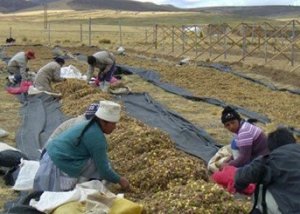 Transformed into a fine powder through the gentle embrace of a milling machine, the roots reveal their raw maca powder essence. However, there exists another realm of maca—a realm where the raw powder undergoes a transformation known as gelatinization. Through the alchemy of water and heat under pressure, the starch molecules within the maca powder surrender to change, forming a gel-like substance. This essence of transformation is then dehydrated and finely ground, birthing gelatinized maca powder—a concentrated form with heightened digestibility and enhanced nutrient absorption.
Transformed into a fine powder through the gentle embrace of a milling machine, the roots reveal their raw maca powder essence. However, there exists another realm of maca—a realm where the raw powder undergoes a transformation known as gelatinization. Through the alchemy of water and heat under pressure, the starch molecules within the maca powder surrender to change, forming a gel-like substance. This essence of transformation is then dehydrated and finely ground, birthing gelatinized maca powder—a concentrated form with heightened digestibility and enhanced nutrient absorption.
At OrganicCrops, we weave an intricate tapestry of partnership with local farmers, nurturing the growth of maca through sustainable and ethical practices. Our collaboration extends beyond the fields as we provide educational programs, empowering farmers with knowledge of organic farming methods, the significance of sustainability, and the preservation of age-old farming traditions. Fair trade principles guide us, ensuring that the dedication and hard work of these farmers are justly rewarded. Through this harmonious alliance, OrganicCrops upholds the sacred legacy of maca production, preserving Peru's cultural heritage, and presenting discerning consumers with ethically crafted maca products of unparalleled quality.
Peruvian maca root comes in a range of colors, including yellow/white, red, and black, with each color having a unique nutritional and flavor profile. These colors come from the outer layer of the maca root, and while they all contain beneficial nutrients like vitamins, minerals, and antioxidants, they also have distinct properties and health benefits.
The flesh of the maca root is typically cream-colored or off-white, regardless of the color of the outer layer. The pigmentation of the skin depends on the concentration and types of phytochemicals present, which can vary depending on the type of maca and growing conditions.
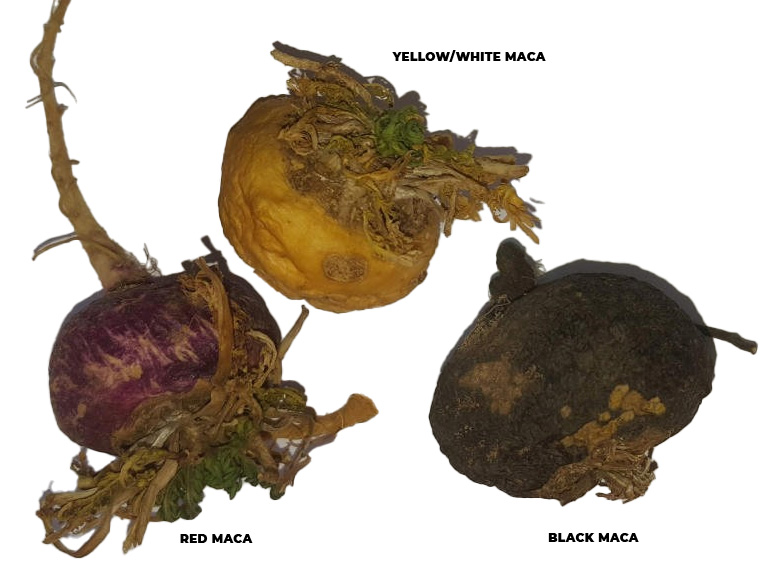
Yellow maca, also known as white maca, stands as the most widely available and extensively researched variety. Renowned for its capacity to invigorate energy levels, alleviate stress, and enhance overall well-being, yellow maca has earned its acclaim. A study published in the Journal of Medicinal Food unveiled its ability to improve cognitive function while reducing anxiety and depression in postmenopausal women. Additionally, research published in the International Journal of Biomedical Science highlighted yellow maca's potential to enhance sperm count and motility in men grappling with erectile dysfunction. Embracing yellow maca or white maca is a splendid choice for those seeking an energy boost and an elevated sense of well-being.
With its allure and rarity, red maca emerges as a less common variety, captivating attention for its potential to enhance female fertility and reduce prostate size in men. Research published in the journal Reproductive Biology and Endocrinology illuminated red maca's impact on female reproductive health, showcasing increased embryo implantation rates. Similarly, the Asian Journal of Andrology featured a study highlighting red maca's ability to reduce prostate size in male rats. While further exploration is essential to fully grasp red maca's effects on human fertility and prostate health, these initial findings offer a glimpse into its promising potential for those seeking to nurture these aspects of well-being.
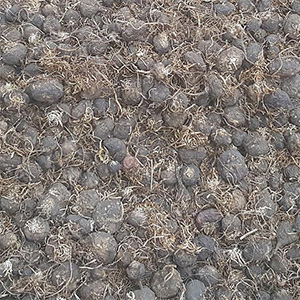 In the realm of maca, black maca stands as the rarest gem, harboring potent effects on sexual health and stamina. A study published in the Journal of Medicinal Food revealed black maca's significant role in increasing sexual desire among men. Moreover, the journal Andrologia showcased research illustrating black maca's capacity to enhance sperm count and motility in male rats. While additional investigation is necessary to comprehensively comprehend the impact of black maca on human sexual health, these preliminary studies paint a promising picture for those seeking to awaken their libido and elevate their sexual performance.
In the realm of maca, black maca stands as the rarest gem, harboring potent effects on sexual health and stamina. A study published in the Journal of Medicinal Food revealed black maca's significant role in increasing sexual desire among men. Moreover, the journal Andrologia showcased research illustrating black maca's capacity to enhance sperm count and motility in male rats. While additional investigation is necessary to comprehensively comprehend the impact of black maca on human sexual health, these preliminary studies paint a promising picture for those seeking to awaken their libido and elevate their sexual performance.
The world of maca unfolds in a kaleidoscope of colors, inviting individuals to explore and embrace the unique benefits that each hue brings. Whether opting for the invigorating yellow maca, the captivating red maca, or the enigmatic black maca, the realm of maca offers a path towards holistic well-being and the potential to unlock vitality from within.
Peruvian Maca is known for its potential health benefits. Here, we explore the remarkable advantages associated with consuming maca products:
Peruvian Maca emerges as a superfood, showcasing an array of health benefits that encompass vibrant hair growth, heightened brain function, increased testosterone levels, harmonized hormones, amplified energy levels, and comprehensive support for overall health and wellness. Unlock the potential of maca and embark on a transformative journey towards a vibrant and thriving existence.
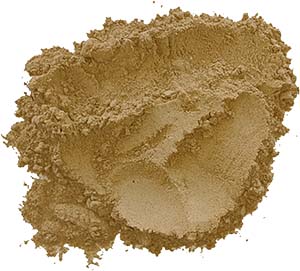 Peruvian maca is available in various forms, each with its own unique benefits. Maca powder is available in two forms: natural (raw) and gelatinized. Natural powder is made by grinding the maca root into a fine powder, while gelatinized powder is made by steam-boiling the maca root to remove the starch. Gelatinized powder is more easily digestible and has a smoother texture.
Peruvian maca is available in various forms, each with its own unique benefits. Maca powder is available in two forms: natural (raw) and gelatinized. Natural powder is made by grinding the maca root into a fine powder, while gelatinized powder is made by steam-boiling the maca root to remove the starch. Gelatinized powder is more easily digestible and has a smoother texture.
Here are some of the most common types of maca products:
Now that you know the benefits of Peruvian maca and the different product forms, you might be wondering how to incorporate it into your daily routine. Here are some tips on how to use maca:
Peruvian maca, when consumed in moderation, is widely regarded as safe for most individuals. However, it is crucial to be mindful of potential side effects and considerations to ensure a responsible approach to incorporating maca into your diet. Here's what you need to know:
By exercising caution, seeking professional guidance, and being mindful of individual sensitivities, you can embrace the benefits of maca while prioritizing your safety and well-being.
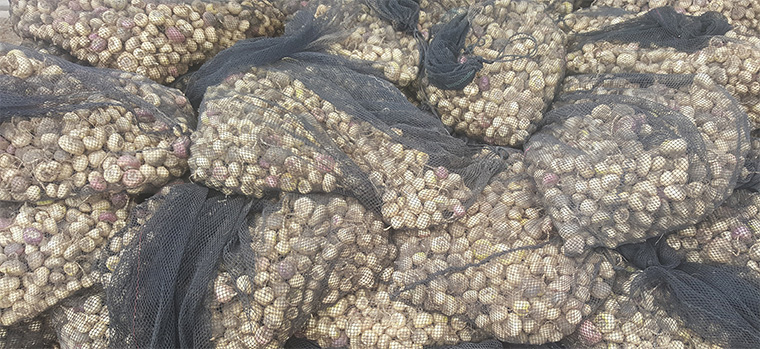
Peruvian maca, a captivating superfood cherished for centuries, unveils a world of remarkable health benefits. With OrganicCrops' unwavering commitment to producing exceptional, organic maca, you can rest assured that you are receiving the finest product available. Whether your aspirations encompass heightened energy levels, balanced hormones, or overall well-being, maca holds the potential to be your steadfast companion. By heeding the tips and guidelines provided throughout this article, you can seamlessly integrate maca into your daily routine, embarking on a transformative journey towards a life enriched by the incredible powers of Peru's treasured super root.
Research and studies used for this article: